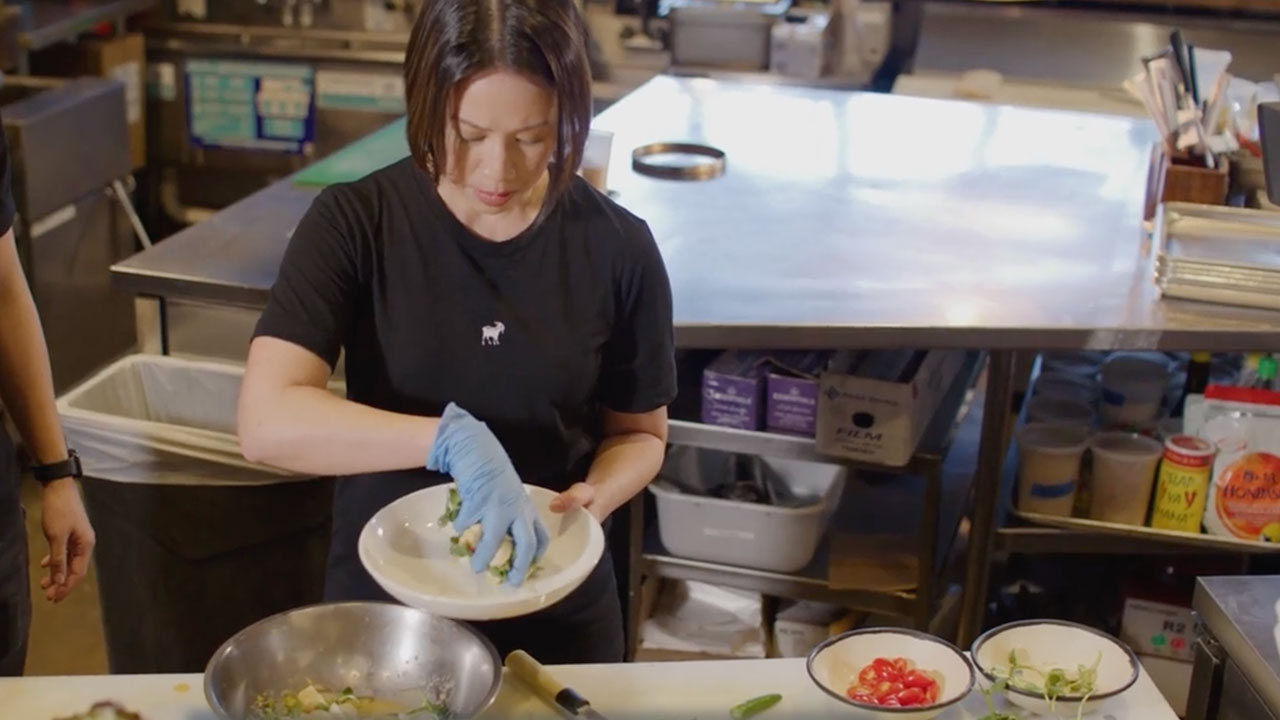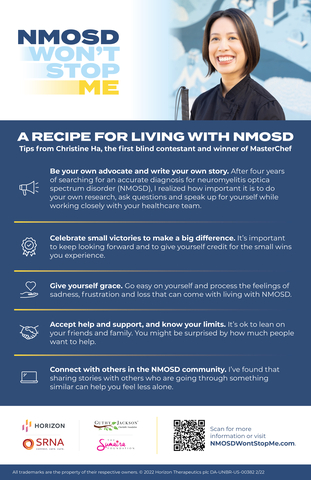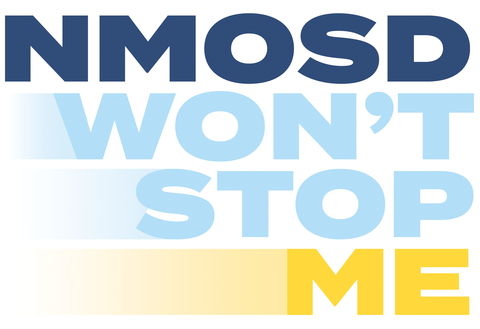DUBLIN--(BUSINESS WIRE)--Horizon Therapeutics plc (Nasdaq: HZNP) is teaming up with Christine Ha, the first blind contestant on MasterChef and winner of the show’s third season, who has been living with neuromyelitis optica spectrum disorder (NMOSD) for more than 20 years. For NMO Awareness Month in March, Horizon and Ha are collaborating with the Guthy-Jackson Charitable Foundation, Siegel Rare Neuroimmune Association, and The Sumaira Foundation, on an initiative called “NMOSD Won’t Stop Me,” which encourages people living with NMOSD and their care partners to share their stories and advocate for themselves.
NMOSD is a rare inflammatory disease that most often affects the optic nerves and spinal cord and is commonly misdiagnosed as multiple sclerosis.1 It can lead to sudden vision loss, paralysis or both.2 Ha was diagnosed with NMOSD at 23 years old, four years after experiencing her first NMOSD symptom of optic neuritis. After diagnosis, she continued to experience optic nerve inflammation which caused her to lose almost all of her vision by age 28. Ha’s condition did not stop her from winning the third season of MasterChef, opening two Houston-based restaurants, authoring a cookbook, hosting a cooking show for the visually impaired and much more.
“NMOSD is a part of me, but it’s not all of me – I’m also a chef, a writer, an entrepreneur, Vietnamese-American and many other things,” said Ha. “I’m excited to be part of this initiative and to hear how others living with NMOSD define themselves, outside of the condition. For anyone who is part of a rare disease community, it’s a shared diagnosis that brings us together, but I think it’s through our individual triumphs and journeys that we can really learn from one another.”
Everyone who submits a story will receive Ha’s cookbook, Recipes from My Home Kitchen, and the chance to connect with Ha and others living with NMOSD during a Facebook Live event and virtual cooking class. Individuals who submit stories could also be selected for a special chance to meet Ha.
“There has been great progress made for people living with NMOSD over recent years, and we remain committed to supporting the community not only through our medicine, but also by working with our advocacy partners and providing resources to help foster connections,” said Kristina Patterson, M.D., Ph.D., medical director, neuroimmunology, Horizon. “There can often be a long road to an accurate NMOSD diagnosis, and Christine has underscored the importance of education and self-advocacy to find answers. We hope this initiative allows people living with NMOSD to learn from one another, and ultimately helps more people find answers.”
For more information and additional resources, including a tips sheet from Ha for living with NMOSD, visit NMOSDWontStopMe.com.
About Neuromyelitis Optica Spectrum Disorder (NMOSD)
NMOSD is a unifying term for neuromyelitis optica (NMO) and related syndromes. NMOSD is a rare, severe, relapsing, neuroinflammatory autoimmune disease that attacks the optic nerve, spinal cord, brain and brain stem.2,3 Approximately 80% of all patients with NMOSD test positive for anti-AQP4 antibodies.4 AQP4-IgG binds primarily to astrocytes in the central nervous system and triggers an escalating immune response that results in lesion formation and astrocyte death.5
Anti-AQP4 autoantibodies are produced by plasmablasts and plasma cells. These B-cell populations are central to NMOSD disease pathogenesis, and a large proportion of these cells express CD19.6 Depletion of these CD19+ B-cells is thought to remove an important contributor to inflammation, lesion formation and astrocyte damage. Clinically, this damage presents as an NMOSD attack, which can involve the optic nerve, spinal cord and brain.5,7 Loss of vision, paralysis, loss of sensation, bladder and bowel dysfunction, nerve pain and respiratory failure can all be manifestations of the disease.8 Each NMOSD attack can lead to further cumulative damage and disability.9,10 NMOSD occurs more commonly in women and may be more common in individuals of African and Asian descent.11,12
About Horizon
Horizon is focused on the discovery, development and commercialization of medicines that address critical needs for people impacted by rare, autoimmune and severe inflammatory diseases. Our pipeline is purposeful: We apply scientific expertise and courage to bring clinically meaningful therapies to patients. We believe science and compassion must work together to transform lives. For more information on how we go to incredible lengths to impact lives, visit www.horizontherapeutics.com and follow us on Twitter, LinkedIn, Instagram and Facebook.
References
- Mealy MA, Wingerchuk DM, Greenberg BM, Levy M. Epidemiology of neuromyelitis optica in the United States: a multicenter analysis. Arch Neurol. 2012;69(9):1176-1180.
- Ajmera MR, Boscoe A, Mauskopf J, Candrilli SD, Levy M. Evaluation of comorbidities and health care resource use among patients with highly active neuromyelitis optica. J Neurol Sci. 2018;384:96-103.
- What is NMO? Guthyjacksonfoundation.org. Accessed April 15, 2021. www.guthyjacksonfoundation.org/neuromyelitis-optica-nmo/
- Layman’s Guide to NMO. Sumairafoundation.org. Accessed April 25, 2021. https://www.sumairafoundation.org/laymans-guide-to-nmo/
- Liu Y, et al. A tract-based diffusion study of cerebral white matter in neuromyelitis optica reveals widespread pathological alterations. Mult Scler. 2011;18(7):1013-1021.
- Chihara N, et al. Interleukin 6 signaling promotes anti-aquaporin-4 autoantibody production from plasmablasts in neuromyelitis optica. PNAS. 2011;108(9):3701-3706.
- Duan T, Smith AJ, Verkamn AS. Complement-independent bystander injury in AQP4-IgG seropositive neuromyelitis optica produced by antibody dependent cellular cytotoxicity. Acta Neuropathologica Comm. 2019;7(112).
- Beekman J, et al. Neuromyelitis optica spectrum disorder: patient experience and quality of life. Neural Neuroimmunol Neuroinflamm. 2019;6(4):e580.
- Kimbrough DJ, et al. Treatment of neuromyelitis optica: review and recommendations. Mult Scler Relat Disord. 2012;1(4):180-187.
- Baranello RJ, Avasarala, JR. Neuromyelitis optica spectrum disorders with and without aquaporin-4 antibody: Characterization, differential diagnosis, and recent advances. J Neuro Ther. 2015;1(1):9-14.
- Wingerchuk DM. Neuromyelitis optica: effect of gender. J Neurol Sci. 2009;286(1-2):18-23.
- Flanagan EP, et al. Epidemiology of aquaporin-4 autoimmunity and neuromyelitis optica spectrum. Ann Neurol. 2016;79(5):775-783.







